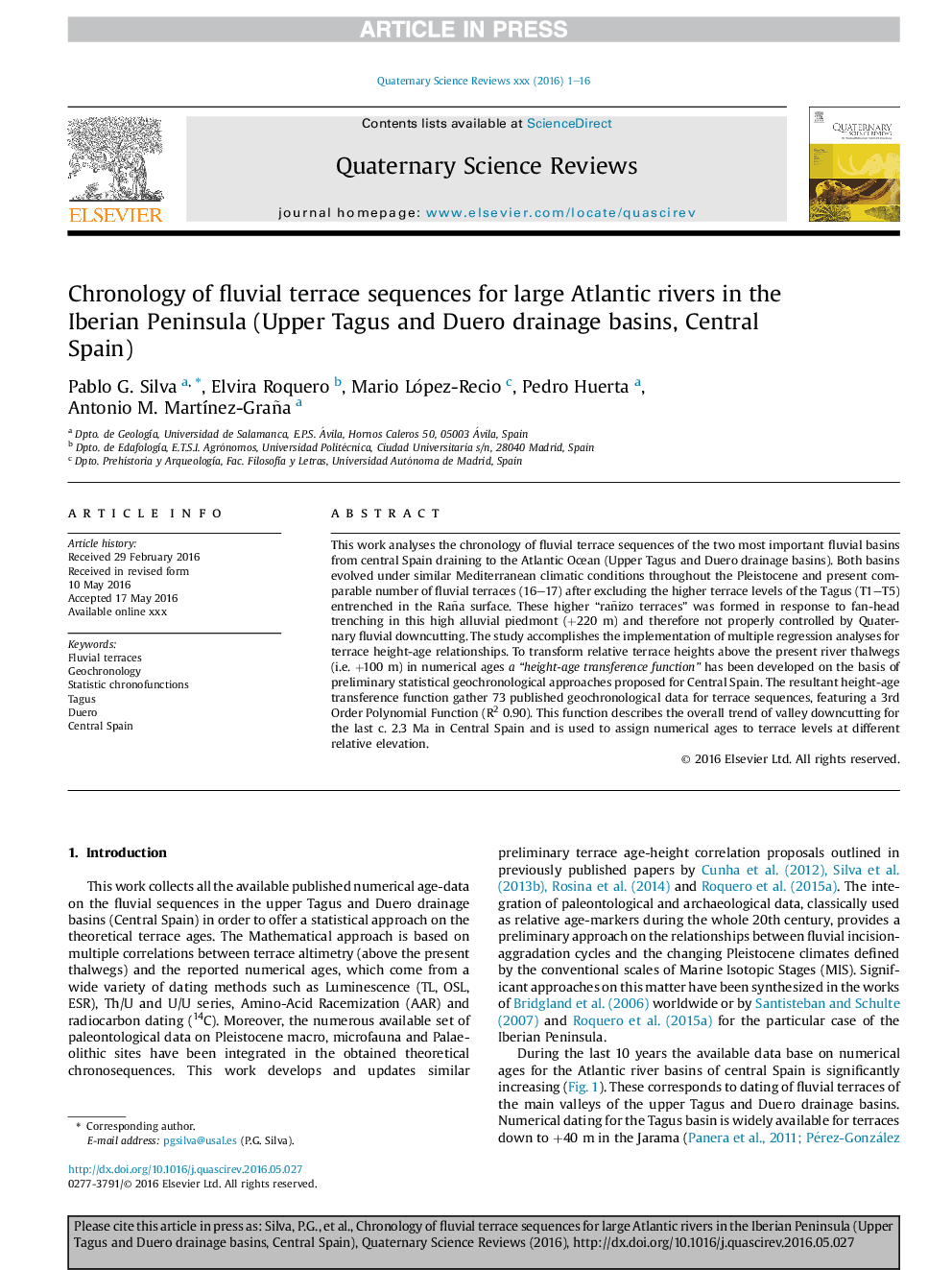| Article ID | Journal | Published Year | Pages | File Type |
|---|---|---|---|---|
| 5786720 | Quaternary Science Reviews | 2017 | 16 Pages |
Abstract
This work analyses the chronology of fluvial terrace sequences of the two most important fluvial basins from central Spain draining to the Atlantic Ocean (Upper Tagus and Duero drainage basins). Both basins evolved under similar Mediterranean climatic conditions throughout the Pleistocene and present comparable number of fluvial terraces (16-17) after excluding the higher terrace levels of the Tagus (T1-T5) entrenched in the Raña surface. These higher “rañizo terraces” was formed in response to fan-head trenching in this high alluvial piedmont (+220 m) and therefore not properly controlled by Quaternary fluvial downcutting. The study accomplishes the implementation of multiple regression analyses for terrace height-age relationships. To transform relative terrace heights above the present river thalwegs (i.e. +100 m) in numerical ages a “height-age transference function” has been developed on the basis of preliminary statistical geochronological approaches proposed for Central Spain. The resultant height-age transference function gather 73 published geochronological data for terrace sequences, featuring a 3rd Order Polynomial Function (R2 0.90). This function describes the overall trend of valley downcutting for the last c. 2.3 Ma in Central Spain and is used to assign numerical ages to terrace levels at different relative elevation.
Related Topics
Physical Sciences and Engineering
Earth and Planetary Sciences
Geology
Authors
Pablo G. Silva, Elvira Roquero, Mario López-Recio, Pedro Huerta, Antonio M. MartÃnez-Graña,
